Safe Work Australia has awarded the Centre for Transformative Work Design at Curtin University a grant valued at $373,762.
Safe Work Australia has published the 2021 National Return to Work Survey Headline Measures Report.
Safe Work Australia’s new data on the Jurisdictional Comparison dashboard shows that in 2023-24, WHS authorities across Australia:
Safe Work Australia has released its new annual publication, Evidence Matters.
The Safe Work Australia researcher video series was created to highlight the breadth and variety of research happening across the work health and safety (WHS) and workers’ compensation sectors.
The Safe Work Australia researcher video series was created to highlight the breadth and variety of research happening across the work health and safety (WHS) and workers’ compensation sectors.
The Safe Work Australia researcher video series was created to highlight the breadth and variety of research happening across the work health and safety (WHS) and workers’ compensation sectors.
The Safe Work Australia researcher video series was created to highlight the breadth and variety of research happening across the work health and safety (WHS) and workers’ compensation sectors.
The Safe Work Australia researcher video series was created to highlight the breadth and variety of research happening across the work health and safety (WHS) and workers’ compensation sectors.
The Safe Work Australia researcher video series was created to highlight the breadth and variety of research happening across the work health and safety (WHS) and workers’ compensation sectors.
The Safe Work Australia researcher video series was created to highlight the breadth and variety of research happening across the work health and safety (WHS) and workers’ compensation sectors.
The Safe Work Australia researcher video series was created to highlight the breadth and variety of research happening across the work health and safety (WHS) and workers’ compensation sectors.
The Safe Work Australia researcher video series was created to highlight the breadth and variety of research happening across the work health and safety (WHS) and workers’ compensation sectors.
The Safe Work Australia researcher video series was created to highlight the breadth and variety of research happening across the work health and safety (WHS) and workers’ compensation sectors.
The Safe Work Australia researcher video series was created to highlight the breadth and variety of research happening across the work health and safety (WHS) and workers’ compensation sectors.
Safe Work Australia’s Research Summit brings together over 200 leading voices to discuss current research, emerging priorities and evidence gaps in work health and safety and workers’ compensation.
The Research Summit Directory is a publicly available resource designed to showcase the breadth and depth of researchers and experts working across work health and safety and workers’ compensation.
Your privacy rights
Your personal information is protected by law, including the Privacy Act 1988 (Cth) (Privacy Act) and the Australian Privacy Principles (APPs), which regulate how entities including SWA may collect, use, disclose and store per
Day 1 – Tuesday 9 September 2025
| Time | Activities | |||
| 9:00am to 11:00am | Welcome addresses | |||
The Research and Evaluation Strategy will guide our collaboration and conversations with colleagues across the WHS and workers’ compensation ecosystem to facilitate research that contributes to healthier, safer workplaces.
The Research and Evaluation Strategy will guide our collaboration and conversations with colleagues across the WHS and workers’ compensation ecosystem to facilitate research that contributes to healthier, safer workplaces.
The research strategy:
The Research and Evaluation Strategy will guide our collaboration and conversations with colleagues across the WHS and workers’ compensation ecosystem to facilitate research that contributes to healthier, safer workplaces.
Safe Work Australia has released its Research and Evaluation Strategy which outlines the goals and priorities guiding our national research agenda.
Safe Work Australia released its Research and Evaluation Strategy today, setting out a national research agenda to make workplaces safe and save lives.
Share your research
We’re keen to uncover the latest research innovations and to understand how experts are approaching research that might affect WHS and workers’ compensation systems.
Safe Work Australia’s research grant recipient, the Centre for Transformative Work Design at Curtin University, has completed their research to explore interventions to manage psychosocial risks in the aged care sector.
In March 2024 Safe Work Australia commissioned the Australian Industrial Transformation Institute, Flinders University to undertake a literature review on harmful behaviours in the workplace.
This report examines the evidence of different approaches to early intervention in workers’ compensation in Australia and what works to reduce recovery times and improve return to work outcomes for injured workers.
This report provides evidence-based information about diseases and occupational exposures for consideration by jurisdictions when reviewing the deemed diseases lists in their workers’ compensation legislation.
Safe Work Australia is pleased to announce a second release of industry and workers’ compensation data to the beta site https://data.safeworkaustralia.gov.au.
This snapshot presents findings about the impacts of the COVID-19 pandemic on workers returning to work after an injury or illness.
The methodological report supports the 2021 National Return to Work summary report and details the methodology followed in the compilation of the 2021 National Return to Work Survey.
This summary presents highlights from the 2021 National Return to Work Survey including key metrics, insights and time series data. The summary also includes a section on COVID-19 and its impact on recovery and return to work.
Safe Work Australia has published the Review of the 2015
This report provides evidence-based information on a list of diseases and occupational ex
This report provides a summary of key measures from the 2021 National Return to Work Survey – the ‘returned to work rate’ and the ‘current return to work rate’.
Today’s society is increasingly focused on a 24/7 economy and the expectations on people to work at all hours of the day have increased.
